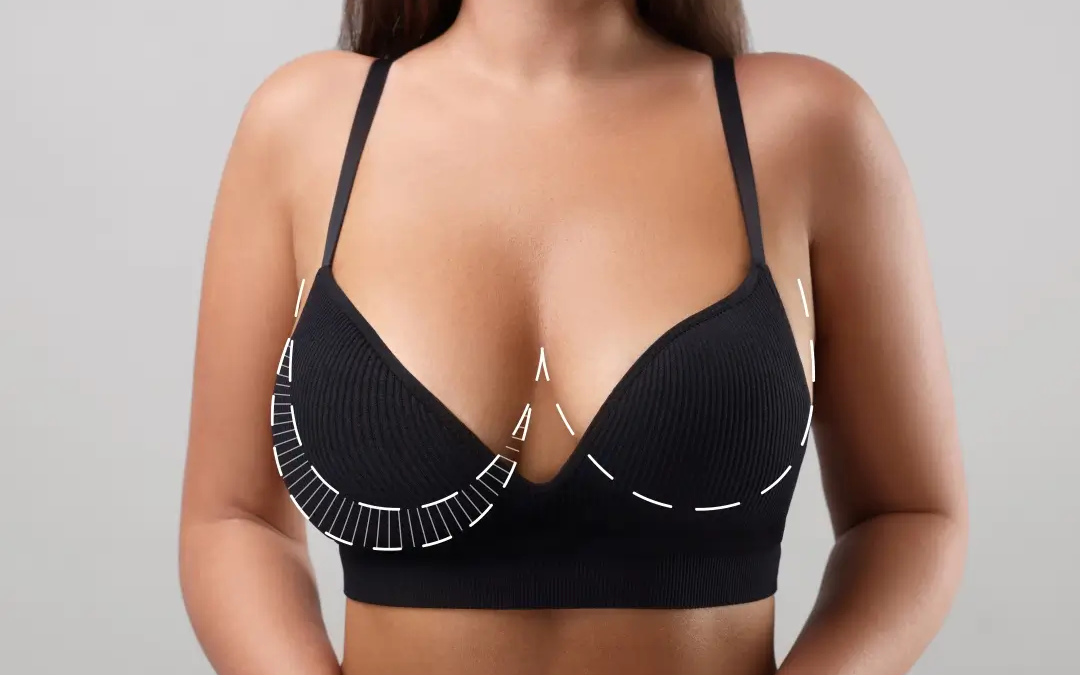If you struggle with the weight – both physical and emotional – of overly large breasts, you’re not alone. At Dr. Cat Plastic Surgery, we see countless stories of women turning to breast reduction surgery for relief.
You may be contemplating surgery, or perhaps you’re already adjusting to these changes post-op. While the outcome is everything you imagined, it’s normal to wonder if breast growth after reduction is a possibility. Could your hard-earned transformation really come undone?
Today, we answer this question with expert insights on breast tissue dynamics. We’ll shed light on what’s possible after your surgery and advice for navigating changes with confidence.
Breast Reduction: The Process and Its Impact
Breast reduction surgery, or mammoplasty, is a procedure designed to reduce the size of your breasts. This is done by carefully removing breast tissue, relocating the nipple and areola, and lifting the breasts to a more natural and aesthetic placement.
Your surgeon can take one of two traditional approaches to achieve this:
- Inferior Pedicle (Anchor) Technique: Ideal for larger breast reductions, this involves three incisions: one around the areola, another vertically down to the breast crease, and a third along the crease under the breast, forming an anchor-like incision. This allows for significant removal of breast tissue and skin. It also preserves blood flow and sensation to the nipple and areola.
- Vertical (Lollipop) Technique: This method uses two incisions: one around the areola and a second running vertically from the bottom of the areola to the breast crease, resembling a lollipop shape. It’s ideal for moderate breast reduction and also results in less scarring than the anchor technique.
Breast Reduction Goals
Breast reduction surgery is more than just a cosmetic change — Dr. Cat sees it as a life-changing intervention that addresses physical, functional, and psychological aspects of your well-being.
Here’s what your procedure aims to accomplish:
- Alleviate chronic pain (neck, back, and shoulders)
- Eliminate bra strap indentations
- Improve posture
- Reduce skin irritation
- Balance body proportions
- Improve breathing problems
- Enhance physical activity
- Expand wardrobe options
- Improve confidence and mental wellness
This dramatic impact is why the prospect of changes in breast size post-reduction can be such a daunting thought.
Understanding the Likelihood of Breast Growth After Reduction
So, does the possibility of breast growth after reduction exist? Unfortunately, the answer is yes.
Breasts can grow back post-op due to a few different reasons:
- Hormonal changes: Fluctuations from pregnancy, menopause, or hormonal therapies can increase your breast size, even after a reduction.
- Weight gain: Breasts are made partly of fatty tissue, which means weight gain can increase breast size, while weight loss can reduce it. This is why most surgeons recommend that patients maintain a stable BMI before and after surgery.
- Aging: As you age, your body undergoes natural changes that can shift your body’s fat distribution. It’s also common for breast tissue to lose elasticity and firmness, potentially altering the shape and size of your breasts.
- Genetics: Your genetics also influence how your body changes and responds to different life stages. If you’re genetically predisposed to larger breasts, this trait could continue to influence breast size even after reduction surgery.
- Breastfeeding and pregnancy: Pregnancy and breastfeeding significantly alter breast shape and size due to hormonal shifts and milk production. If you become pregnant or breastfeed after surgery, you could encounter some changes.
- Medications: Certain medications, especially those that affect your hormones (like birth control or hormone replacement therapy), can also cause changes in breast size post-reduction.
Your breast reduction healing process also plays a part in preventing complications and unwanted changes.
Breast Reduction Healing Process and Timeframe for Potential Regrowth

Immediately post-op, you’ll likely feel a bit groggy from the anesthesia. You’ll have dressings on your incisions, drains to prevent fluid build-up, and a surgical bra for support. This is accompanied by swelling, bruising, and slight discomfort.
Over the first few weeks, swelling and bruising will slowly go down. You’ll see your surgeon for follow-ups to ensure everything’s healing nicely. During this time, you’ll avoid working out and sleep on your back to keep pressure off your breasts.
Any changes you notice around this time are most likely a byproduct of swelling. As this subsides, you’ll get a clearer picture of your new breast size.
Midway into your recovery, you’ll start to feel more like yourself. You can gradually return to normal activities but still, take care with strenuous exercise. At this point, Dr. Cat typically integrates her specialized scar therapy.
During this period, it’s critical to watch for potential breast regrowth. Hormonal changes, weight fluctuations, or your body’s natural adjustment process can influence size.
In about one month, scars are less noticeable, and the swelling is gone. You’ll revel in the final shape of your rejuvenated décolletage.
Any significant changes in breast size post-reduction due to aging, hormonal shifts, or weight changes typically become more evident in the long term.
Managing Emotional Responses to Breast Growth
As for the emotions that a patient experiences with post-op changes like breast regrowth? They can be detrimental.
Fortunately, you have several avenues for coping with unexpected breast changes:
- Professional counseling: It can be helpful to speak with a therapist specializing in body image issues. They offer a safe space to express concerns and work through emotions related to post-op changes in your body.
- Support groups: Seek online or in-person support services for post-op emotional health. By sharing and connecting with others who have similar experiences, you can find comfort and practical insights on how to cope.
- Check-ins with your surgeon: No one understands post-op changes better than your provider. They can offer advice, reassure you about what’s normal, and discuss any further steps if necessary.
For those who still dream of a lasting transformation, all hope is not lost.
Revision Surgery After Breast Reduction
Cosmetic surgery isn’t a decision taken lightly. It can take months, sometimes years, of introspection, research, and careful financial planning — all fueled by hope for the transformation you’ve envisioned for so long.
The disappointment can be heartbreaking when you finally reach that point and find your outcome falls short.
As a specialist in breast revision procedures, Dr. Cat knows this story all too well. In fact, she’s lived it, having undergone revision surgery to amend her own breast augmentation.
We get it; revision surgery after breast reduction can be scary, especially when your initial experience didn’t quite go the way it was supposed to. But with the right surgeon by your side — one who understands your concerns, commits to your vision, and has a proven track record of exceptional revisions — this second chance can be your path to the results you’ve always dreamt of.
Dr. Cat Plastic Surgery: Empowering Through Knowledge
While breast growth after reduction isn’t impossible, many agree the benefits outweigh this potential risk. You just have to do your part — follow your post-operative guidelines and entrust your transformation to a skilled, reputable surgeon.
Dr. Cat is dedicated to empowering through knowledge in breast reduction, so you’re fully prepared and never disconnected from your body after surgery.
Ready to reclaim your confidence? Book a consultation with Dr. Cat today.


